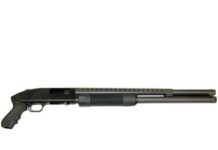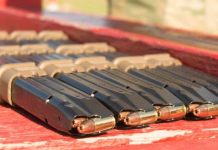Unveiled in 2016, the Beretta APX was the 500 year old gun company’s first major duty oriented polymer framed striker fired 9mm handgun. At the time of its launch, this pistol certainly was categorically nothing new since many major gun manufacturers had already been marketing some form of a 9mm striker fired polymer framed pistol. The Beretta APX, while well thought out and smartly designed lived in the shadows of its bigger rivals like Glocks, Smith and Wesson M&Ps, the SIG-Sauer P320, et al. The lack of wider aftermarket support as compared to those giants also did not help its case. However, what compelled me to independently purchase my own specimen in early 2021 was the fact that gun is a sleeper. For what it cost and the feature set that my basic no frills full size “duty” pistol has out of the box, it was certainly a deal.
To clarify, the original APX duty size handgun is no longer sold as a “new” retail item. Beretta USA has revamped their APX line and is now selling the Beretta APX A1, which is the current iteration of this pistol—it is optics ready among other things too. But this article is about the original duty sized APX, which is what I own and what I am writing about.
Even now and in spite of the fact that this particular model is no longer at the forefront of the APX family, it has it niche. Like an older Glock, this is the kind of pistol one can keep in the back of their safe to hand out as a loaner or to keep as a backup. The APX could also serve casual gun owners well, like people on a budget or those who just do not expect to shoot all that much but still need a pistol.
Upon closer inspection, it’s evident that Beretta had done its homework during the development of this handgun. As far as the guns Beretta has produced throughout its history are concerned, the APX will probably never win any beauty contests. However, when in the hand, it’s quite evident that utility and practicality were one of Beretta’s design parameters during development. The pistol’s grip is extremely ergonomic and this is something that is immediately noticeable. The grip is friendlier to those with smaller sized hands (which is another reason I think it makes a great loaner pistol). The APX also ships with a few different interchangeable backstrap grip inserts in order to suit a wide variety of users. While most semi automatic pistols have slide serrations that are carved into the material of the slide itself, the APX differs in that it has no serrations. Instead it has a series of widely spaced spines throughout the whole length of both the left and right sides of the slide. Visually, these look very odd, but in reality they are very practical and very easy to grip in order to rack the slide across all conditions—muddy, wet, frozen, bloody, dusty, with or without gloves, etc. Unfortunately, the new APX A1 does not have these spines.
Like other truly modern handgun designs, the Beretta APX also has ambidextrous slide releases and as a left handed shooter this is something I appreciate after a lifetime of having to adapt to right handed firearms. The magazine catch is reversible while it is placed in a great location where most human thumbs can actuate it. A Picatinny accessory rail adorns the dustcover underneath the muzzle. The out-the-box trigger on the 1st generation APX pleasantly surprised me. It does not have the typical spongy striker trigger. The trigger travels approximately 0.15 inches or so until it gently reaches its “wall.” Pushing past this trigger wall to break the shot is fairly pleasant. Once again, for the cost of admission, I will not complain terribly about the APX’s trigger. Because the pistol is popular amongst IPSC competitors overseas, trigger spring kits and related accessories that improve ignition are available. The same is true for fiber optic sight options. Plenty of shooters have aslo been shooting their first generation APX pistols with slide mounted red dots as well. Like the Sig Sauer P320 and P250 before it, the Beretta APX also has a serialized fire control group, so the grips and frames are freely interchangeable.

Besides their affordable prices and usefulness, the saving grace of the APX is the fact that it has many common parts that are cross generationally interchangeable with its newer brother, the APX A1. Both pistols use the same 17 round magazine and these will obviously not be difficult to find. They also share several small parts, so keeping the older generation Beretta APX afloat is not that impractical. Given the continued progress Beretta has made with the APX line, the aftermarket for parts today is probably a little more accessible than it was when the first pistols launched. I decided to shoot the Dot Torture drill for my APX’s maiden voyage.. I attached my U-Boat “A” to the accessory rail and worked from my PHLster Floodlight. All in, this was a very reasonable handgun to shoot and I would consider that a respectable five yard dot torture target. For a gun that cost me $349 retail in 2021 at a big box outdoor store not including taxes or fees, I am satisfied.



